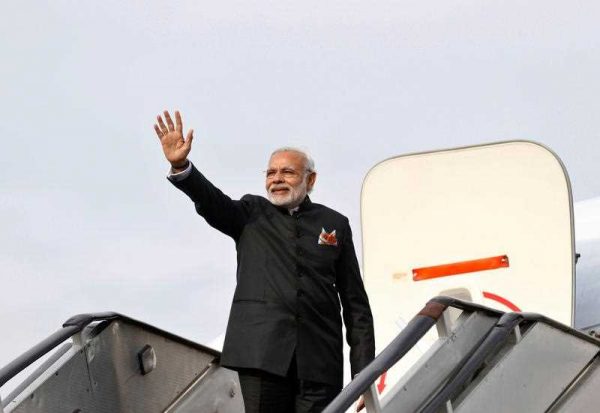, and subsequent sluggish world output and trade trends, economic growth in India has been lacklustre and remains well below potential.
Forecasts of Indian economic growth for 2016 vary, with 7.5 per cent (the World Bank’s estimate for 2015–16) being the average. Others, including the Vice Chairperson of the NITI Aayog, Prime Minister Narendra Modi’s revamped planning authority, have suggested that an 8 per cent growth rate for 2015–16 is still possible. The revival of manufacturing sector growth could be a major component of renewed growth. But the key question is whether India can sustain this anticipated revival of growth?
The sluggishness of global growth and sustained high production of petroleum has led to sharp falls in the price of oil and other commodities on the global market. Even as India has continued to struggle to regain its old level of exports, the fall in the price of oil (India imports nearly 70 per cent of the petroleum it uses) has helped abate wholesale price inflation and facilitate successive reductions in official interest rates.
This, along with the sharp rise in business sentiment following the election of the Modi government, has at least partially contributed to a revival of Indian manufacturing. The fall in the price of oil has also been used to reduce or even remove large sections of India’s complex fuel subsidies, thus helping the budget bottom line.
Consumer price index (CPI) inflation was brought down largely by prudent management of government food stocks and controlled releases of food grain into the open market. But with two successive years’ of drought the outlook for food inflation is less positive. And the threat of a rate rise lurks in the background. CPI inflation, though, is more responsive to supply side factors than interest rate changes.
Deeper changes in the economic environment are proceeding at a good pace. The most important of these is addressing the sharp drop in savings and investment, particularly in the period from 2012–14. Of greatest significance is the prime minister’s Jan Dhan Yojana initiative announced on Indian Independence Day 2014. The scheme allows anyone to open a bank account — even at zero balance — and permits, under certain conditions, insurance and loan facilities.
This must rank as one of the most innovative measures of financial inclusion witnessed in a country like India — where nearly half the population was outside the banking system until recently. By October 2015, 190 million bank accounts were opened under this scheme and deposits worth US$3.5 billion collected. This has enabled mass participation in the financial system and led to an increase in financial savings.
Additional measures to augment financial savings and reduce the current account deficit include the recently announced ‘gold schemes’. This could have the effect of reducing India’s vast imports of gold (in 2014–15 this was nearly US$32 billion not counting jewellery), thus reducing the current account deficit during a period in which exports are not expected to grow quickly.
It could also bring into the financial system vast amounts of gold — estimated to be in the thousands of tonnes — lying idle within households and institutions. This has the potential to increase savings, particularly financial savings. More broadly, higher economic growth is the most significant determinant of savings. So the recent spurt in growth should also help in this effort.
On the investment side, domestic investment is expected to have risen by 4.1 per cent in 2014–15 over its value in 2013–14. With more than US$31 billion flowing in as foreign direct investment (FDI) from January to June 2015, India was the most significant destination for FDI in the world, surpassing both China and the United States. But again the issue of sustainability comes up. This initial spurt can largely be attributed to the relaxation of the norms for FDI in a number of sectors and Prime Minister Modi’s persistent marketing of India as an investment destination.
Whether these levels of FDI inflow can be sustained depends on a number of domestic reforms including taxation, relaxation of regulations and further facilitating ease of doing business. Many of these are in the purview of state governments, so results may not be imminent. Much also depends on how international financial markets respond to the much-anticipated raising of US interest rates. Although the Reserve Bank of India has built up a huge forex kitty, financial inflows may be sensitive to a rise in US interest rates.
On balance, the prospects for sustained economic growth in India look bright — although there are a number of caveats. Chief among these are a number of domestic policy questions relating to taxation and regulation, improvement of infrastructure, as well as prospects for global economic and trade growth in a post-zero US interest rate world.
Raghbendra Jha is Professor of Economics, Head of the Arndt-Corden Department of Economics, and Executive Director at the Australia South Asia Research Centre, The Australian National University.
This article is part of an EAF special feature series on 2015 in review and the year ahead.

